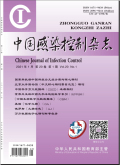中国感染控制杂志2024,Vol.23Issue(4):538-543,6.DOI:10.12138/j.issn.1671-9638.20245047
亚抑菌浓度抗菌药物影响金黄色葡萄球菌生物膜形成的研究进展
Research progress in the effect of sub-minimum inhibitory concentration of antimicrobial agents on the biofilm formation of Staphylococcus aureus
摘要
Abstract
Staphylococcus aureus(SA)is one of the common pathogens causing healthcare-associated infection,which easily adheres to the surface of catheters or implants to form biofilm,leading to increased antimicrobial resis-tance,and posing great challenge to clinical treatment.In recent years,studies have shown that antimicrobial agents at sub-minimum inhibitory concentration(sub-MIC)can affect the biofilm formation of SA.This paper elaborates the formation process and gene regulation of SA biofilm,as well as the effect and mechanisms of different antimicro-bial agents at sub-MIC on SA biofilm formation,so as to provide basis for effective control and treatment of SA bio-film-related infection.关键词
亚抑菌浓度/抗菌药物/金黄色葡萄球菌/生物膜形成/作用机制Key words
sub-minimum inhibitory concentration/antimicrobial agent/Staphylococcus aureus/biofilm formation/mechanism分类
基础医学引用本文复制引用
张晓润,宋爽,朱丽莹,王文静,陶臻..亚抑菌浓度抗菌药物影响金黄色葡萄球菌生物膜形成的研究进展[J].中国感染控制杂志,2024,23(4):538-543,6.基金项目
南京医科大学科技发展基金一般项目(NMUB20220080) (NMUB20220080)

